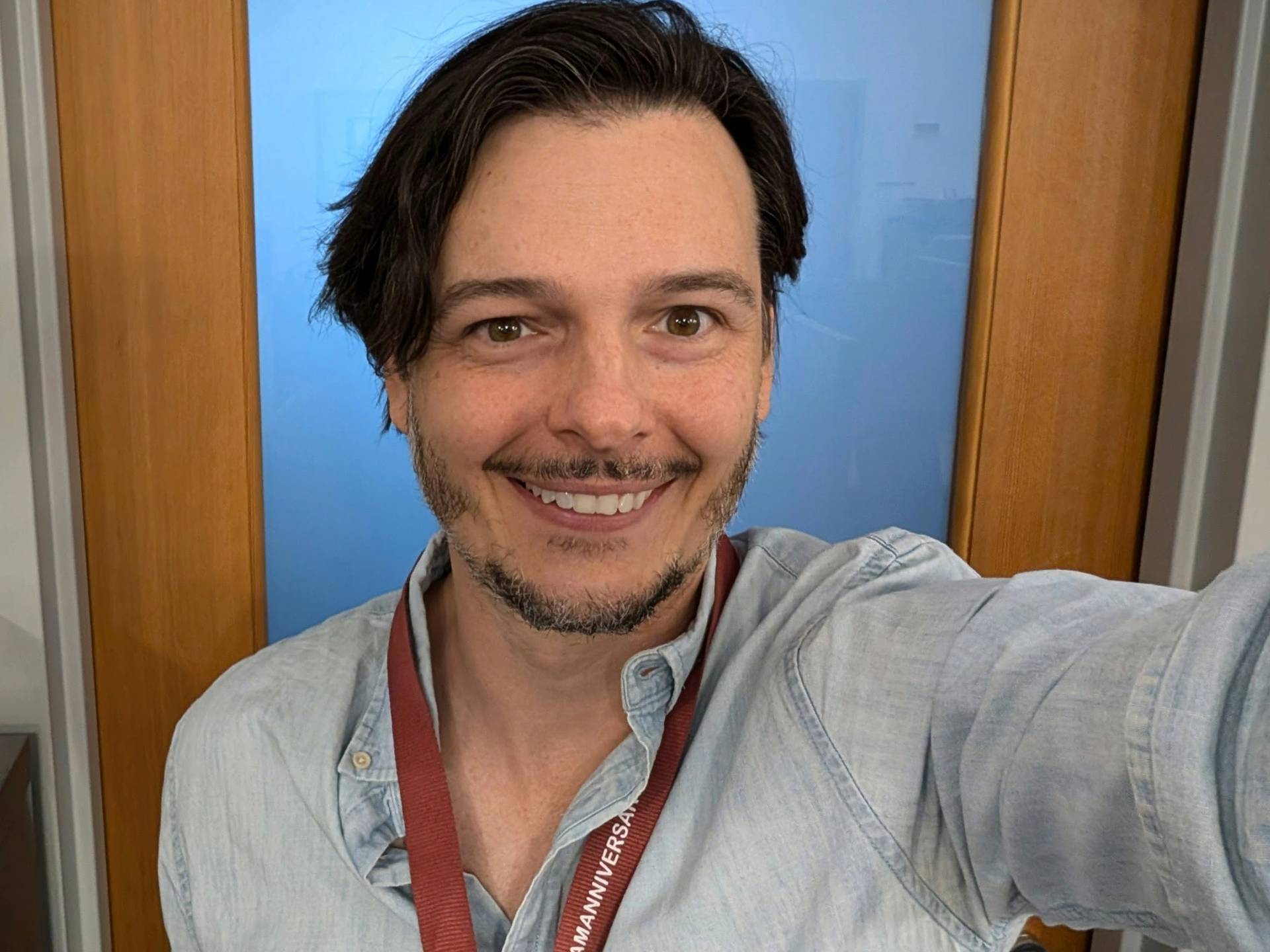订阅 wiki
Share wiki
Bookmark
Marek Olszewski
Marek Olszewski
Marek Olszewski 是cLabs的首席执行官兼联合创始人,cLabs是Celo 区块链的创建者,Celo是一个以太坊 Layer 2和移动优先的区块链网络,旨在实现全球快速、低成本的支付。 [1][2]
教育
Olszewski于2005年和2007年毕业于多伦多大学,获得计算机工程学士和硕士学位。他还曾在微软和谷歌担任软件工程师实习生,在多伦多大学担任研究助理,以及在Sun Microsystems和微软研究部门担任研究实习生。然后,他于2012年从麻省理工学院获得计算机科学博士学位(ABD),并在那里担任研究助理。 [3]
职业生涯
在麻省理工学院,奥尔谢夫斯基于2010年11月与勒内·莱因斯伯格共同创立了Locu,这是一款帮助本地企业管理其SEO和评论网站业务列表的应用程序,他担任首席技术官。2013年8月,GoDaddy收购了该公司,奥尔谢夫斯基成为工程副总裁,直到2017年1月。2017年8月,奥尔谢夫斯基和莱因斯伯格共同创立了cLabs和Celo基金会,奥尔谢夫斯基担任cLabs的首席执行官。四年后,在2021年7月,他成为Valora的总裁,Valora是一款移动优先的Web3钱包,用于发送和保存加密货币。 [4][5]
Celo
Olszewski 和 Reinsberg 在 Empire Podcast 上讨论了 Celo 的移动优先用户体验和实际用例。他们从 Celo 的起源开始:[6]
“Rene 和我是在麻省理工学院 Tim Berners-Lee 教授的关于原始 Web 3 的课程上认识的。早在 2010 年,Berners-Lee 就在研究语义网和链接数据,这被认为是网络的第三个版本。我们的第一家公司 Loku 主要是一家数据领域的机器学习公司,起源于 Web 3。我们的想法是像对待文档一样对待数据——让它们对所有人开放和可访问。快进到今天,开放数据仍然很有价值,无许可的公共账本是另一种以完全开放和透明的方式表示数据的方式。”
“我认为,首先,我们是 Ethereum 生态系统的坚定信徒。我们从在 Ethereum 上构建钱包开始,我们最终致力于 Celo 平台本身的原因是,我们希望创建使非 crypto-原生人员可以轻松使用 钱包 并解决实际用例的功能。这使我们意识到我们需要一个安全、去中心化并提供单区块最终性的共识协议,以便付款不会被撤销。因此,我们创建了一个新的 权益证明 协议。大约三年前我们推出时,Celo 是第一个主要的 权益证明 EVM 兼容链,这非常令人兴奋。我们还添加了诸如使用代币原生支付 gas 的功能,而无需第三方捆绑器或元交易中继器。这特别有用,这样如果我向你发送 稳定币,你可以传递它而不会被卡住。此外,我们引入了电话号码作为可选的身份层,允许人们以完全去中心化的方式向其联系人列表中的电话号码发送付款。”
Olszewski 随后解释了为什么重点是移动优先平台:[6]
“当我们开始时,没有人谈论移动。一切都是基于桌面,主要通过 MetaMask 作为浏览器扩展访问。当时,没有主要的移动 钱包,当然也没有关于 Solana 手机的讨论。我一直在强调我们搞反了——Web3 应该领先,因为 Web2 十多年前就转向了移动。卢克·弗罗布列夫斯基 (Luke Wroblewski) 写了一本名为 *Mobile First* 的著名书籍,该书席卷了 Web2,并促使其过渡到移动。然而,不知何故,Web3 在这个关键领域落后了。我们对移动的关注不仅仅是为了赶上这种发展;它是由这样一种信念驱动的,即最需要 crypto 和 Web3 优势的人都在移动设备上。这种信念促使我们开发了一种使用阈值密码学和 BLS12-377 的共识协议,使我们能够创建一个基于状态的轻客户端。没有其他 EVM 兼容协议实现了这一点,这非常重要,因为轻客户端对于安全性和去中心化至关重要。我们努力开发了一些允许您同步少量数据的东西。”
“很多 P2P 支付活动发生在美国境外,尤其是在拉丁美洲和非洲。Rene 提到了 Colectivo,它位于库拉索,但 Celo 上还有其他协议提供普遍基本收入 (UBI),例如 Impact Market 和 GoodDollar。这些举措主要集中在新兴市场,Impact Market 深入参与巴西的贫民窟社区、整个西非,甚至在美国撤军后的阿富汗。这些都是真正的对抗环境,以具有成本效益的方式交付付款具有挑战性,但他们发现使用 Celo 的轨道使他们能够非常便宜地向任何人发送价值,这使他们比 GiveDirectly 之类的东西效率高出一个数量级,GiveDirectly 一直是 Web3 之外的低管理费用现金转移的领导者。Impact Market 的伟大之处在于他们将资金分散给受益人,然后这些钱在这些社区内流通。人们使用像 Valora 这样的移动 钱包,我在上面花了一些时间——我们最初在 Ethereum 上开始的 钱包 的演变——就像美国人使用 Venmo 一样,让钱在这些社区内流通。”
在采访结束时,Olszewski 分享了他对 Valora 钱包的看法:[6]
“我认为它在展示 Celo 提供的所有早期惊人功能方面做得非常好,并创建了一个非常易于使用的移动 钱包。如果你看看 钱包 的主屏幕,是的,有一个 dApp 浏览器,你可以在应用程序中签署交易,这非常优雅,但主屏幕上的两个主要操作是“发送”和“接收”。因此,它真正迎合了这种支付用例,这就是我们在新兴市场看到的——人们使用 钱包 进行支付。所以是的,我对此感到非常兴奋;如果你还没有尝试过 Valora,我强烈建议你查看一下。”
面板
OP Stack
在Optimistic Gathering 2024上,Olszewski介绍了Celo从Layer 1 (L1)区块链战略性过渡到使用OP Stack的Layer 2的过程。他强调了这种迁移的技术挑战,例如确保与以太坊的兼容性以及管理高交易量而不造成中断。此举的驱动力是需要更紧密地与以太坊保持一致,并利用Celo不断增长的用户群,这主要得益于与Opera的MiniPay等合作伙伴关系。过渡过程包括部署Dango测试网以及计划在今年晚些时候进行的进一步升级。 [7]
Celo的选择
在EthCC的Superchain Space上,Olszewski讨论了Celo决定从Layer 1区块链过渡到使用OP Stack的Layer 2解决方案,这与以太坊的愿景相符,并提供了技术优势。他解释了这种迁移的挑战,特别是适应Celo独特链数据的复杂性以及维持其高交易量。Olszewski还介绍了Dango,这是一个将Celo功能集成到OP Stack中的测试网,并概述了在年底前在Celo网络中全面实施过渡的路线图。[8]
探索CEL2和OP Collective
在CELO GATHER 2024上,Olszewski和Optimism联合创始人Mark Tyneway讨论了Celo从Layer 1 区块链到以太坊上的Layer 2解决方案的转变,该方案利用了Optimism的OP Stack。他们强调了区块链网络中互操作性和可扩展性的重要性,Optimism正准备将其主网升级到具有无需许可的故障证明系统的Stage 1 rollup。讨论还涵盖了追溯性公共物品资助以及模块化区块链设计的重要性,该设计允许链之间的定制和差异化,同时支持有影响力的项目并保持低交易成本。 [9]
实际应用
在区块链应用斯坦福峰会上,Olszewski介绍了Celo通过从Layer 1过渡到Layer 2解决方案来扩展区块链应用的计划。此次过渡的关键目标包括维持低gas费用、保持去中心化以及确保单区块交易的最终性。Celo旨在通过使用Eigenlayer来实现经济高效的数据可用性,并实施去中心化排序器模型来增强抗审查性。该方法还包括使用稳定币支付gas费用以及提供灵活的交易最终性选项等功能,以改善整体用户体验。 [10]
Celo Talk
在2023年伊斯坦布尔Restaking峰会上,Olszewski讨论了Celo向以太坊上的Layer 2解决方案过渡的努力,以提高可扩展性并降低gas费用。他强调了Tron在每日活跃地址和支付活动中的主导地位,并将其与以太坊面临的挑战进行了对比。Olszewski解释了Celo与IGDA(一种数据可用性层)的集成,这在性能和带宽改进方面显示出了希望。他将IGDA的功能与以太坊的Proto和Danksharding进行了比较,指出虽然以太坊的解决方案提供了强大的安全性,但IGDA为Layer 2链提供了一种潜在的具有成本效益的替代方案。[11]
发现错误了吗?
